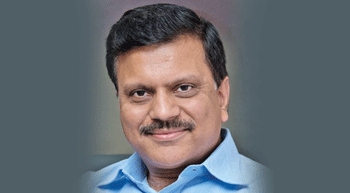
Rural India?s steady contribution is a robust signal of the revival
How do you assess the prevailing scenario in the road sector?
Industry estimates suggest that almost 20 road projects worth nearly Rs 27,000 crore have failed to get bids from the private sector in the last two fiscals due to delays in project execution after allotment. With a new government at the Centre with a clear majority and backed with a development-based manifesto, the future looks good. The announcement of 8,500 km road projects in the current fiscal was certainly ambitious as it came in the backdrop of road ministry being able to award just 3,169 km of projects against targeted 9,500 km in last fiscal. Anecdotal evidence suggests that 2,150 km of projects were awarded in H1 of the current fiscal. Therefore, the clear intentions of fast, smooth and transparent project execution shown by the government should translate into real demand in the next fiscal.
What is the current demand growth for compaction and earthmoving equipment?
Last few years have not been conducive to infrastructure sector including construction equipment. Infrastructure investment in the first two years of the 12th Five Year Plan has only been 63 per cent of the target. The overall earthmoving and construction equipment market declined by 15 per cent in 2013 and a similar 16 per cent decline is expected in 2014. The demand remains subdued and scattered with no clear sectors leading the pack. However, at macro level, rural India is contributing consistently and now even higher than the urban India in the past few years. This has been a positive and robust signal for revival in the near future.
What are the major challenges in the current scenario?
The major challenges remain due to lack of a clear policy framework, financial allocation to infrastructure projects and funding-related issues. To address these fundamental concerns, the new government has started working on making the policy framework much more transparent and smooth, such as electronic tendering and auctions, opening up of certain sectors to privatisation, etc.components Due to high gestation period, the government is pushing the banks to offer long-term loans with flexible structuring to the infrastructure sector. Recent correction in inflation rate should also result into more affordable lending rates. The availability of funds is being eased through the formation of Real Estate Investment Trusts (REITs) and Infrastructure Investment Trusts (INVITS). However, attractive private and foreign capital to invest in these trusts remains a challenge to be overcome.
Since the new government has taken charge, overall, there has been quite a bit of positive vibes. Has this started reflecting on the sale of earthmoving and compaction equipment?
The positive vibes so far are intended at the resolution of procedural, policy related hurdles such as environmental clearances, land acquisition issues, transparent e-auction of tenders / contracts, etc. The recent announcement of opening up the commercial coal mining to private players is also a welcome sign. These initiatives are intended at a medium to long-term growth. In the short term, the demand for earthmoving and compaction equipment hasn?t been impacted so far. This is mainly because of availability of a high pool of equipment with low utilisation levels. Any marginal increment in demand will get consumed within this available established equipment pool, but as this utilisation of equipment goes up, fresh requirements will emerge in many areas.
How do you assess the future potential by 2020?
The year 2020 is a long shot but considering the infrastructure deficit in the country and a clear intent shown by the government to bridge those, the future potential for construction equipment is immense. With certain ambitious projects getting kick-started such as river cleaning and interlinking, metro connectivity in major cities, major highway projects, high-speed rails, etc, the construction equipment looks all set to grow at a CAGR of nearly 15 per cent up to 2020. With the world looking at India as indicated by the recent financial commitments from major economic powers such as Japan, China, Russia and the US, coupled with a clear intent shown by the Indian government, this level of growth looks completely plausible.


 +91-22-24193000
+91-22-24193000 Subscriber@ASAPPinfoGlobal.com
Subscriber@ASAPPinfoGlobal.com